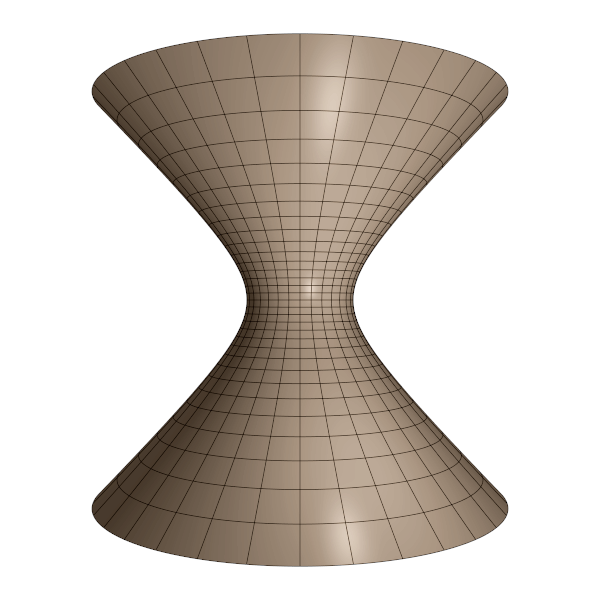Line
Object type: Plane curve
Definition
In $\mathbb{R}^2$, a (straight) line $L$ is a set of points satisfying the equation $$ax + by = d$$ for some $a, b, d \in \mathbb{R}$, with at least one of $a$ and $b$ non-vanishing. Below the line $x + y = 1$ is shown.
Properties
The line $ax+by=d$ passes through the origin iff $d = 0$. The normal direction of $L$ is $(a, b)$. A line through the point $\mathbf{x}_0 \in \mathbb{R}^2$ with direction $\mathbf{v} \in \mathbb{R}^2$ is the image of the parameterisation map $$t \mapsto \mathbf{x}_0 + t \mathbf{v}, \quad \quad \forall t \in \mathbb{R}.$$ For example, the line above is the image $\mathbf{r}(\mathbb{R})$ where $$\mathbf{r}(t) = \underline{\mathbf{e}} \begin{pmatrix}0\\1\end{pmatrix} + t \underline{\mathbf{e}}\begin{pmatrix} 1\\-1\end{pmatrix}, \quad\quad \forall t \in \mathbb{R}.$$
Curvature
A straight line has everywhere zero curvature, $\kappa \equiv 0$.
Examples
According to Newton's first law of motion, any object not subject to a non-vanishing net force will travel with constant velocity, thus along a straight line.
